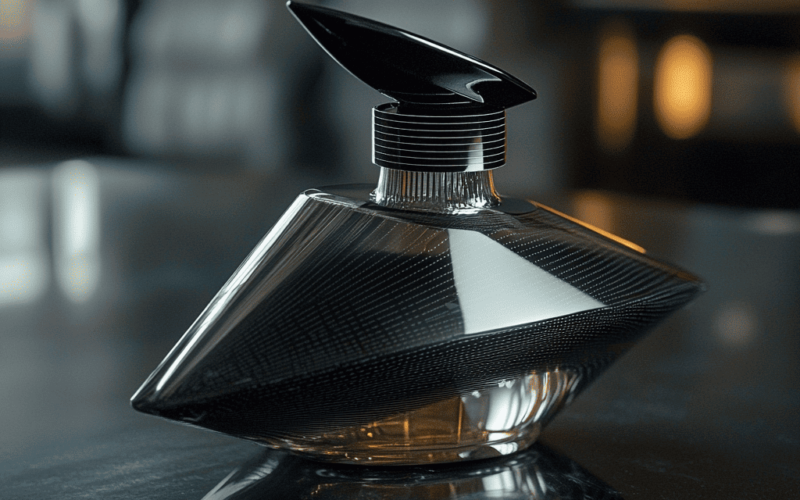The aerodynamics of a bottle is not only a technical aspect related to air and liquid movement, but also an important element that influences the perception of a scent. It is no coincidence that perfume bottles come in a variety of shapes and designs. Every detail, from angles to lines, can influence the perception of a scent and, to some extent, even its durability.
The shape of a bottle not only serves an aesthetic purpose, but also contributes to the perception of a fragrance from a psychological point of view. Every element, from the volume to the curves of the glass, plays a role in how we perceive a particular perfume. In this article, we will take a closer look at how the shape of the bottle affects our perception of a fragrance, as well as touch on aspects that are important to consider when designing perfume packaging.
Aesthetics and psychology of perception
The design of the bottle plays an important role in the first impression of a perfume. It is not only the appearance of the packaging, but also the associations it evokes in the buyer. The appearance of the bottle can be a key factor in making a purchase decision because:
● certain bottle shapes can create a sense of luxury and exclusivity;
● Other forms are perceived as more youthful or, on the contrary, classic and restrained.
Psychologically, we tend to perceive a scent through images created by the shape of the bottle. For example, smooth and rounded lines can be associated with soft, floral notes, while sharp and geometric ones can be associated with something more modern or even experimental. All of this, in turn, influences our expectations of the perfume.
The effect of shape on aroma distribution and retention
In addition to the aesthetic impact, the shape of the bottle plays an important role in how the fragrance is distributed and retained. Some bottles, such as those with a wide neck, can create a stronger spray, which allows the fragrance to be revealed more vividly and intensely. While narrow bottles with a narrow sprayer create a more delicate cloud, which may be preferable for light and fresh fragrances.
The shape of the bottle can also affect the longevity of the fragrance:
● Dark glass bottles protect the perfume from exposure to light, which can destroy the aroma molecules;
● Wider bottles with a tight lid help the fragrance to “mature” and, over time, open up into richer, more complex notes.
It is also important to consider the materials the bottles are made of. Glass or metal often prevents air from getting inside the bottle, which helps preserve the scent for a longer period of time.
The influence of bottle size and proportions
The size and proportions of the bottle are directly related to how we perceive the scent. Many brands use small bottles for more concentrated, bright and long-lasting scents. Large bottles are often associated with lighter, “summery” scents.
Typical bottle sizes:
● Small (10-30 ml) – usually used for richer and deeper scents, often with a high concentration of perfume.
● Medium (50-70 ml) – ideal for everyday perfumes that have a soft but stable opening.
● Large (100 ml and more) – mainly suitable for universal fragrances that can be used throughout the day.
In addition, the proportions of the bottle can influence the perception of the fragrance. Proportionally balanced bottles create harmony and are associated with the “integrity” of the fragrance.
Form and its relation to the type of aroma
Each type of fragrance has its own characteristics, and the shape of the bottle helps to highlight these characteristics. For example, bottles for citrus and fresh scents often have simple, light shapes, which reflect the freshness of these scents. While oriental and woody scents are chosen with heavier and more complex shapes, which emphasize the richness and warmth of the scents.
Examples of how a bottle matches a fragrance type:
● Floral fragrances are usually presented in delicate, round bottles with soft lines.
● Woody and spicy fragrances are most often seen in bottles with geometric or strict shapes, which represent seriousness and strength.
● Fruity and citrus scents are associated with bright and light bottles with fresh flowers and fresh lines.
The role of the bottle in consumer choice
In the world of perfume, the bottle is not only functional, but also has a huge impact on the consumer’s decision. The perfect bottle can “sell” the product, while a bad design can make a potential buyer refuse to buy, even if the scent is amazing.
The bottle can serve as a marketing tool:
● It creates the first impression of the product.
● Strives to attract attention and stand out from competitors.
● It is intended to create an association with the image of the brand that stands behind the fragrance.
All of this is important for building the overall reputation of the brand and attracting attention to a particular perfume.
The influence of bottle on durability and perception of longevity
The shape of the bottle can affect how long the scent lasts and how it develops over time. For example, narrow bottles create an air of “concentration,” which can be perceived as longevity. On the other hand, wider bottles, with a larger surface area, allow the scent to “breathe” more evenly and gradually reveal all the notes.
Thus, an important factor is also the packaging, which “controls” the aging process of the fragrance, its interaction with air and the impact of the external environment.
Bottle aerodynamics is an art that affects not only the visual and emotional component, but also the functional aspects. The shape of the bottle plays a key role in the perception of the aroma, its preservation and even intensity. Designers and perfumers skillfully use the shape as a tool to create a unique experience for the user.
Every element of the bottle – from the material to the proportions and shape – influences how we perceive the fragrance and what we think about it. The design of the bottle is part of the fragrance’s story and a powerful marketing tool that can greatly influence the consumer’s choice.
Questions and Answers
The shape of the bottle can create certain associations that influence the expectations of the fragrance, and it also affects its distribution and durability.
Each bottle shape has a functional and psychological meaning that enhances the perception of the scent and its durability.
For fresh fragrances, light and simple bottle shapes are often chosen, which emphasize the freshness and lightness of these scents.

